By Ute Junker
In Rome, even broad beans, believe it or not, are something to get excited about. In fact, if the weather plays along, families right across the Eternal City head outdoors to picnic on fresh broad beans and tangy pecorino cheese to celebrate May Day.
No passing fad, it is a culinary tradition that dates all the way back to the ancient Romans – although their picnics were to celebrate the arrival of spring, rather than Labour Day – proving that in Rome, history really is everywhere, even on your plate.
For some visitors, that much history can be intimidating. They approach the city like it's an endurance test, striving to work their way through as many monuments as they can each day, rushing from Roman ruins to medieval churches, from Raphael to Michelangelo, from the Renaissance to the baroque.
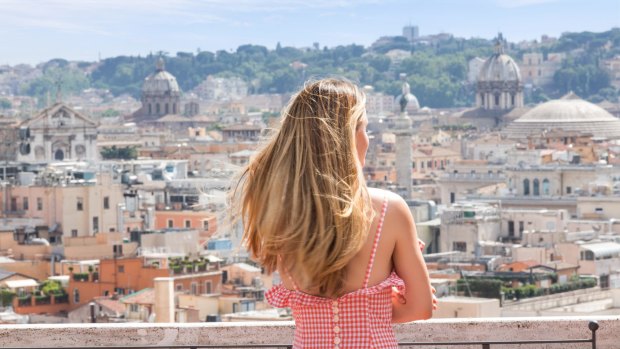
Tackle it that way and you will tick a lot of sights off your list but you will miss many of the small pleasures that make this city one of the most alluring in Europe. You will miss the charm of the jumbled streets, of the small trattorie where tables spill out into sun-drenched squares, of meandering across low-slung bridges or stumbling across cosy wine bars.
Rome wasn't built in a day and it can't be seen in a day, either. In fact we recommend you take five for the deep dive this superlative, ancient city richly deserves.
Below is Traveller's step-by-step guide on how to immerse yourself in Rome's wonders while still taking time to enjoy its many small pleasures.
DAY ONE: BEGIN WHERE IT ALL BEGAN
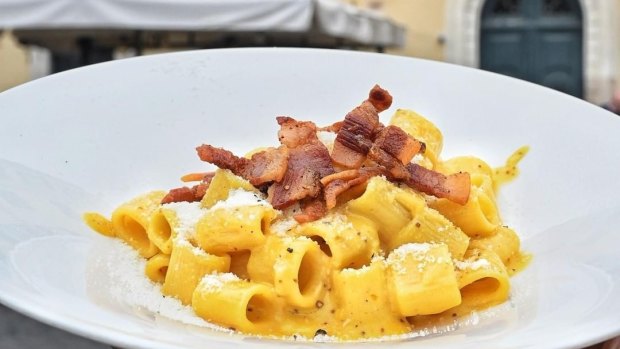
Here’s the first thing to know about old Rome: there is always something new to discover. You could spend two weeks working your way through the city’s ancient sites. But realistically, if you dedicate a day to the imperial past, you can really get a handle on these fascinating people, whose legions marching on perfectly-engineered roads and bridges conquered much of the known world, yet who still held an annual procession in honour of their sacred geese.
The big three sites – the Roman Forum, the Palatine Hill and the Colosseum (romapass.it) – are conveniently close to one another and between them shine a light on virtually every area of Roman life, from the home lives of the city’s elite to the city’s (often intertwined) politics and religion, and its (sometimes bloodthirsty) entertainments.
Joint tickets for the three sites are available at various price points – the more you pay, the more you get access to. As with the city’s other big sights, it pays to book online so you can secure the time slot you want.
It’s also worth paying top dollar to get access to underground tunnels of the Colosseum, now open to the public. Another (comparatively) more modern site worth checking out, accessed from the Forum, is a recently-discovered medieval church.
The stunning 9th-century frescoes inside Santa Maria Antiqua– brought to life by a superb set of projections – have led to it being described as the Sistine chapel of the Middle Ages.
After a full-body immersion into all things ancient Rome, change the pace with a stroll through the nearby Monti neighbourhood, where chic vintage stores sit cheek-by-jowl with neighbourhood bars and corner grocers.
INTERMEZZO
There are plenty of cool bars and old-school restaurants to explore. Stop in for a drink at the Sacripante Gallery, built into an old convent, or tuck into classic Roman dishes at La Carbonara (lacarbonara.it)
DAY TWO: YES, YOU VATICAN
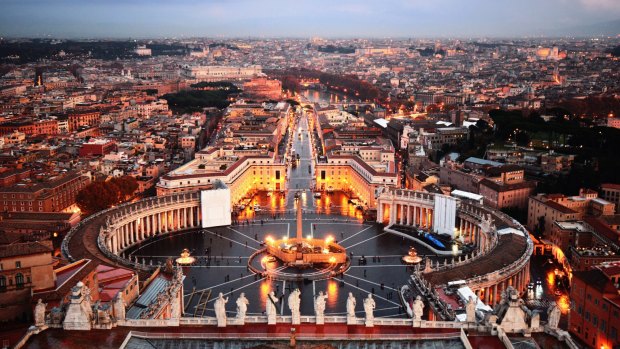
Credit: Getty
I'm going to call it. Yes, the Vatican Museums (m.museivaticani.va) are among Rome's undisputed treasures, a dazzling display of art and architecture. Truth is, though, they can also be a headache-inducing ordeal.
With a reputed 20,000 works of art on display in the museums alone – plus a whole lot more dazzle waiting in the nearby St Peter's Basilica – you have to ask yourself, just how much spectacular art can you handle in one sitting?
For many people the answer is, "not that much", and that is fair enough. There are ways you can enjoy the splendours of the Vatican without overdoing it, and the first rule is, get yourself a guide. Actually, that's rule number two.
Rule number one is, dress appropriately. It is amazing how often tourists still get turned away for wearing shorts or shoulder-baring tops. Basically keep your knees and upper arms covered.
Back to the guide. The key to actually enjoying the Vatican museums is to understand what you are looking at, which is where a guide is invaluable. Tours are available of various durations and at various price points – sign up for one that suits your budget and your attention span.
One other tip: don't get so obsessed with seeing the Sistine Chapel that you tune everything else out.
There are so many amazing things to see in here – my favourites include the Papal apartments, the Bramante Staircase, with its elegant spirals, and the magnificent ancient Laocoon sculpture from ancient Rome. Take the time to appreciate the many beauties on offer.
INTERMEZZO
Unwind at nearby Prati, a buzzy neighbourhood filled with cafes. Stop in for a chocolate espresso (yes, it's a thing) at Sciascia Caffe 1919 (sciasciacaffe1919.it) or at Al Giardino del Gatto e La Volpe (algiardinodelgattoelavolpe.com) for superb pasta. Still hungry? Rome's biggest food market, the Trionfale market, with all sorts of delicacies, is here.
DAY THREE: STOP. REVIVE. SURVIVE
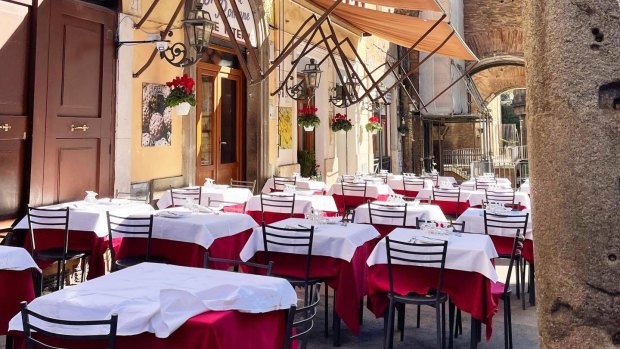
After two days of intensive sightseeing it's time to take a break, and the best way to clear your head is to spend a day without a schedule.
Wandering aimlessly through the city is my favourite thing to do in Rome and no matter how often I meander through the city centre, I always find something new.
If you are one of those people who needs a bit of structure, pick yourself a start and an end point, perhaps the Piazza del Popolo and the Campo de' Fiori. Less than two kilometres separates the two spots if you travel as the crow flies between them, but the whole point is to avoid the direct route.
Head in the general direction, but take in the side streets to see what lies around that next corner. Let yourself get a little lost and you will discover those hidden secrets that give Rome so much of its charm: a picturesque ivy-covered wall, a row of ancient houses, a quiet cafe beside a fountain in a small and sleepy piazza.
Maybe you are not the type who works well without a plan. In that case, try a treasure hunt of sorts. You may, for instance, set yourself the task of visiting every Caravaggio canvas not in a museum, a route which will have you criss-crossing the city to visit some lesser-known churches. Again, though, the idea is to eschew the straight line and explore as you go.
INTERMEZZO
When it comes to meals, stick with the spontaneous approach. Instead of choosing a restaurant in advance, stop in at a random trattoria when you get hungry. You may just end up having the most memorable meal of your life.
DAY FOUR: THE SHOCK OF THE NEW

No, Rome's run of great architecture didn't end in the baroque. The city is also home to some eye-catching contemporary buildings designed by the likes of Zaha Hadid, Richard Meier and Renzo Piano.
To find them you will have to go a little further afield, but the metro and tram systems are easy to use, and you will get to visit the city where few tourists venture.
Take the Jubilee Church in the Tor Tre Teste area. Designed by Richard Meier, and with a faint echo of the Sydney Opera House in its sweeping wings, the Chieso di Dio Padre Miseriecordioso, to give it its proper name, was one of 50 new churches commissioned for Rome's suburbs to celebrate the millennium.
More centrally located are Rome's two contemporary art spaces – the MACRO Museum of Contemporary Art (museomacro.it), housed in a cleverly-converted Peroni factory, and MAXXI (maxxi.art), the National Museum of 21st Century Arts. This striking building by Zaha Hadid features curving walls that intersect and separate from each other.
Other contemporary buildings worth checking out include Renzo Piano's Auditorium Parco della Musica concert halls (auditorium.com), and the EUR neighbourhood, first conceived under Mussolini.
Originally planned as the site for the World Expo Fair of 1942, the designs for EUR - the Italian acronym for Universal Exposition in Rome – have the scale and neoclassical approach that is typical of fascist architecture.
Check out the Palace of Italian Civilization, where Fendi has its headquarters, and the Convention Centre, which features a suspended "cloud" designed by architect Massimiliano Fuksas.
Keep the contemporary mood rolling with dinner at the Michelin-starred Glass Hostaria (glasshostaria.it), where chef Cristina Bowerman gives a new twist to classic flavours amid eye-catching interiors. The wine list is also superb.
DAY FIVE: ROAMIN' BY ROME'S RIVER
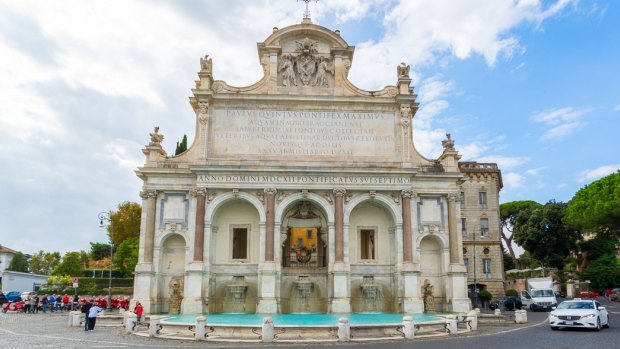
Credit: iStock
Separated by the Tiber River, Trastevere and the Jewish Ghetto are two of Rome's most atmospheric neighbourhoods. Many visitors miss exploring the ghetto, established in 1555 when Pope Paul IV revoked the rights of Rome's Jewish population.
Across the river, Trastevere has a very different vibe. Once a typical working-class neighbourhood, it has become a backpacker favourite: it's not unusual to see foreigners lounging around smoking dope in some of its sun-soaked squares.
Wander down the lively Via del Moro, lined with boutiques and cafes – not to mention the excellent Almost Corner Bookshop – and then head in the opposite direction from the crowds and you will soon discover the more local parts of the neighbourhood.
Trastevere also has several sights worth a visit including the Basilica of Santa Maria in Trastevere, with its mosaics and its Roman columns raided from the Baths of Caracalla.
The don't-miss site is the incredible Villa Farnesina (www.villafarnesina.it), a pleasure palace built by banker Agostino Chigi who called on top painters like Peruzzi and Raphael to cover the walls with frescoes. The riotous display of beauty is simply dazzling.
If you are feeling energetic, a stroll up the Gianicolo Hill will net you one of the best views across Rome – and a good photo stop at the imposing Il Fontanone fountain along the way.
INTERMEZZO
The former Jewish Ghetto is an atmospheric neighbourhood unlike anywhere else in the city and while it doesn't have much in the way of monuments, apart from its synagogue and the ancient Portico d'Ottavia, its superb restaurants are an attraction in their own right – try Giggetto (giggetto.it) or Sora Lella (trattoriasoralella.it).
FIVE MORE ETERNAL CITY EXPERIENCES
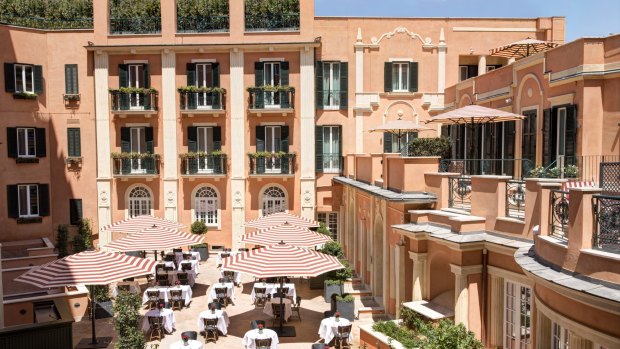
THE PALAZZI
Rome's richest families gathered extraordinary art collections in their private palazzi, many of which are now open to visitors. Top picks include the rococo splendour of the Palazzo Doria Pamphilj (doriapamphilj.it) with its Hall of Mirrors and the Barberini Palace (barberinicorsini.org) with its Bernini and Borromini staircases and canvases by Raphael and Caravaggio.
THE GARDENS
Tucked away in quiet pockets of the city, Rome's gardens are among its most underrated attractions. The lovely Villa Borghese is the city's largest public park; other inviting green spaces include the Botanical Gardens in Trastevere, home to a Japanese garden, bamboo forest and rose garden, and the 240-hectare Parco degli Acquedotti (parcodegliacquedotti.it) near the Appian Way.
THE ROOFTOPS
There is no more perfect way to end a day in Rome than sitting in one of its many rooftop bars, watching as the sun sets over the city's distinctive domes and spires. Our favourites include the glamorous Cielo Terrace at the Hotel de la Ville (roccofortehotels.com) near the Spanish Steps and the laidback cafe atop the Castel Sant'Angelo (castelsantangelo.com) near the Vatican.
THE DETOURS
Just a short train ride of town, Tivoli (visittivoli.eu) is home to two World Heritage sites, Hadrian's Villa and the magnificent gardens at Villa d'Este. Book lunch at Sibilla restaurant (www.ristorantesibilla.it) while you are there. Other memorable excursions include the ancient harbour of Ostia Antica and the hilltop town of Orvieto, with its caves and its stunning Gothic cathedral.
THE GELATO
A stop at one of Rome's artisanal gelaterie is the best way to revive yourself during a long day sightseeing. Try the organic flavours at Günther Gelato Italiano (gunthergelatoitaliano.com), original blends like sage and raspberry at Gelateria del Teatro (gelateriadelteatro.it), or the savoury cacio e pepe at Otaleg (otaleg.com).
THE DETAILS
MORE
turismoroma.it
FLY
Qantas flies its Sydney-Perth-Rome Dreamliner route during the northern summer months. See qantas.com
STAY
Housed in one of Rome's landmark buildings, the Anantara Palazza Naiadi has front-and-centre views of the Diocletian Baths, as well as a rooftop pool and the superb Tazio restaurant. From $516. See nh-hotels.com
Ute Junker travelled as a guest of Anantara.
Sign up for the Traveller Deals newsletter
Get exclusive travel deals delivered straight to your inbox. Sign up now.